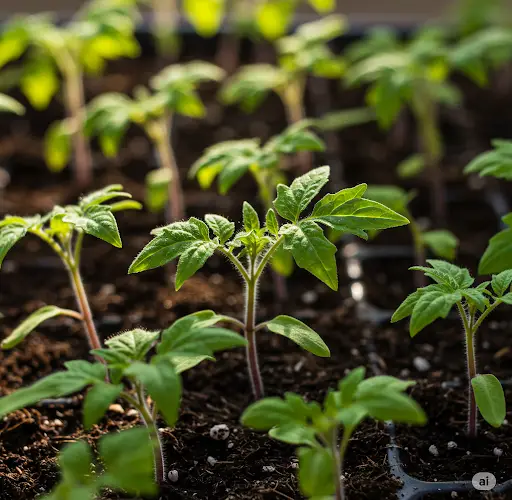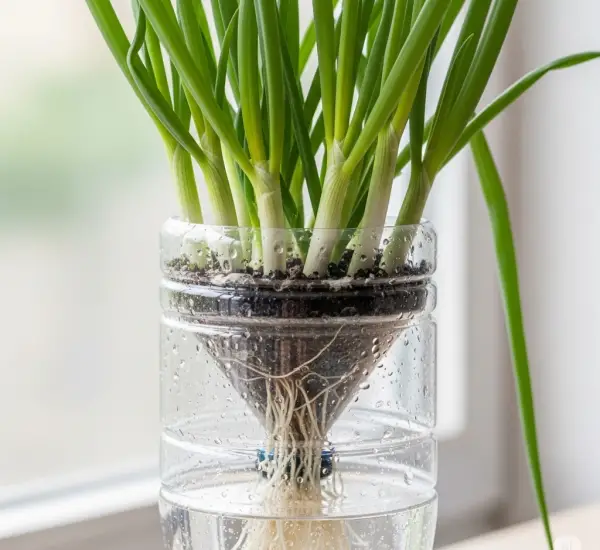Transplanting tomato seedlings is one of the most important stages in their growth. Done properly, it sets the foundation for a strong, disease-resistant plant that yields heavy crops throughout the season. While many gardeners stick to basic transplanting, there’s a specific method that encourages vigorous, bushy growth and deep root development—producing plants that are noticeably thicker, greener, and more productive.
This approach is simple, natural, and based on the biology of the tomato plant. If you transplant your tomatoes this way, you’ll notice the difference not only in appearance but also in overall yield.
Why Transplanting Technique Matters
Tomato plants are unique in that they can grow roots from any part of the stem that is buried under soil. This ability makes them ideal candidates for deep or horizontal planting. By taking advantage of this, you can help the plant establish a wider, more powerful root system—capable of drawing in more water, nutrients, and oxygen.
This technique also helps prevent early wilting, increases resistance to drought and disease, and results in thicker, greener stems that can support heavier fruit later on.
Step-by-Step Guide to Transplanting Tomatoes for Maximum Growth
1. Choose the Right Time
Tomatoes should be transplanted outdoors only when the soil has warmed and nighttime temperatures stay above 10°C (50°F). Harden off seedlings by gradually exposing them to outdoor conditions over the course of 5–7 days before transplanting.
2. Prepare the Soil
Tomatoes love rich, loose, well-drained soil. Before planting, loosen the soil to a depth of 25–30 cm and enrich it with:
-
Well-rotted compost or aged manure
-
A handful of wood ash (for potassium)
-
Crushed eggshells (for calcium)
-
A spoonful of baking soda (to deter fungal pathogens)
Mix everything well and let the soil rest for a few days before planting.
3. Remove Lower Leaves
Before planting, remove the lower leaves from the seedling, leaving only the top 2–4 leaf sets. This allows you to bury the plant deeper or even plant it sideways (a method called trench planting), which stimulates root growth along the buried stem.
4. Plant Deep or Sideways
There are two effective options:
-
Deep Planting: Dig a hole deep enough to bury two-thirds of the plant, leaving only the top leaves above ground.
-
Trench Planting: Dig a horizontal trench, lay the plant sideways so the stem is buried, and gently curve the top upward. This helps in cold or compacted soils where deep digging is difficult.
Both methods encourage the development of a robust root system, which results in stronger, more resilient plants.
5. Water the Hole First
Before placing the seedling in the hole or trench, pour a generous amount of water into it. This ensures deep moisture for root establishment. Optionally, add a small amount of diluted organic fertilizer or compost tea into the water for an added nutrient boost.
6. Backfill and Support
Cover the buried stem with soil, pressing gently around the base. Water thoroughly again after transplanting. Install a stake, cage, or other support system immediately to prevent root disturbance later.
Post-Transplant Care for Green, Thick Growth
Once your tomatoes are in the ground, follow these tips to help them thrive:
-
Mulch around the base with straw, grass clippings, or compost to retain moisture and prevent weeds.
-
Water regularly, especially during the first two weeks. Avoid overhead watering; instead, water at the base of the plant.
-
Feed the plants every 10–14 days with a balanced fertilizer or organic liquid feed like fish emulsion or compost tea.
-
Pinch off suckers (the small shoots between the main stem and branches) to encourage focused energy on fruiting branches.
-
Monitor for pests like aphids or whiteflies, and treat early with neem oil or insecticidal soap if needed.
The Visible Results
When you transplant tomatoes using this deep or trench method, the results are striking. Within days, the plants begin to look sturdier and darker green. As the season progresses, they grow thicker stems, deeper roots, and more leaves, which means better photosynthesis and ultimately more fruit.
Gardeners who adopt this approach often report a significant improvement in both plant health and crop size. It’s a small change in planting technique with a big payoff.
Final Thoughts
Tomatoes are forgiving and adaptable plants, but how you transplant them can make a noticeable difference. By planting deeply and providing early nutrient support, you give your tomatoes the best start possible. This natural method encourages thick, green growth, a stronger root base, and a more productive harvest.
Whether you’re growing a few plants in your backyard or managing a full garden plot, this transplanting technique can help you achieve the lush tomato jungle—and flavorful fruits—you’ve been hoping for.



